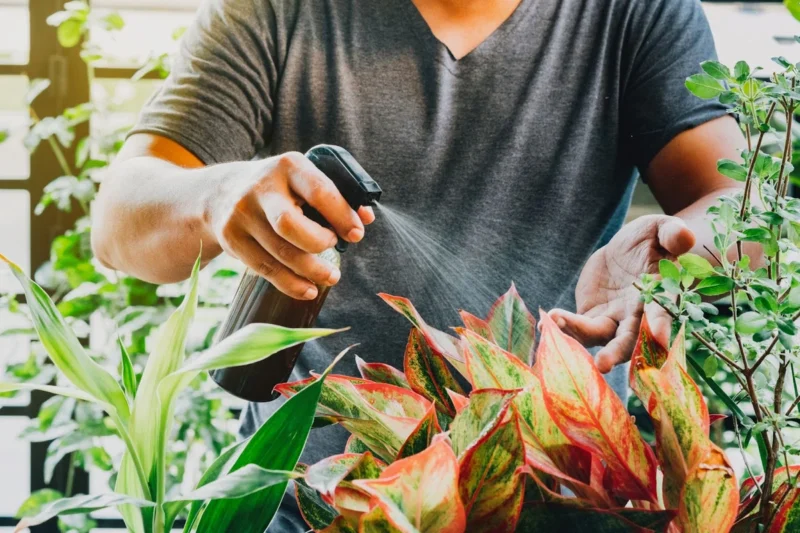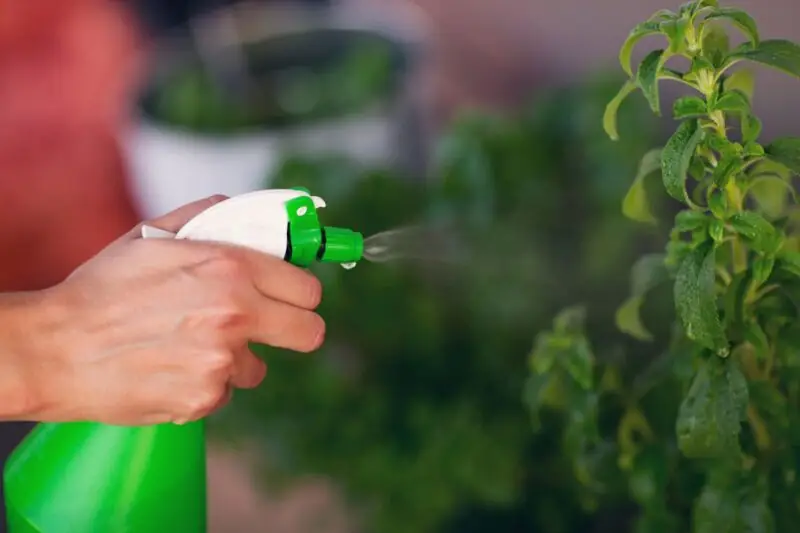Effective Pest Control in Organic Gardening: Utilize Ready-to-Use Insecticidal Soap Spray to Combat Aphids, Mealybugs, etc.

Hello there, green thumbs! Today we’re stepping into the world of insecticidal soap spray, a magical concoction that’ll revolutionize your gardening journey. Whether you’re just starting your gardening journey or have been at it for years, this spray is an absolute game-changer when it comes to keeping your precious plants pest-free.
Understanding the Role of Insecticidal Soap in Plant Care
Let’s kick things off by understanding what insecticidal soap is and why it deserves a spot in your gardening toolbox. Essentially, it’s a specially formulated soap designed to tackle common pests that often plague your outdoor plants and houseplants. These pests, while small, can cause significant damage, turning your once vibrant garden into a wilting mess. But armed with insecticidal soap, you can show these pesky insects the way out, without hurting your beloved plants or the environment.
But why stop at using commercial insecticidal soap when you can make one at home? This is where the joy of DIY comes in! Making your own insecticidal soap not only saves you money but also gives you control over what goes into your spray. Plus, it’s a fun gardening project that you can do at home, making it a win-win.
Understanding Insecticidal Soap
The Functionality of Insecticidal Soap
Insecticidal soap is an interesting product with a simple yet effective mode of action. At its core, it contains salts of fatty acids, which might sound like something out of a chemistry textbook, but trust me, it’s less complicated than it seems. These salts have the ability to penetrate and disrupt the cell membranes of insects. This leads to dehydration and, eventually, the demise of these pests. The best part? It only targets the pests and leaves your plants unaffected.
Insecticidal Soaps: Product Information
The market offers a plethora of commercial bug-killing soaps, the majority of which incorporate potassium salts of fatty acids as their principal component. They’re designed as ready-to-use sprays that you can apply directly onto the pests. While some of these soaps may contain additives, they are generally safe for your plants and the environment. These soaps are also safe to use even on the day of harvest, so there’s no risk of residue on your home-grown produce.
The Insect Targets of Insecticidal Soap
The insecticidal soap isn’t selective about its victims. It’s proficient at eradicating a broad spectrum of soft-bodied insects, including but not limited to aphids, mites, thrips, and mealybugs. The key factor here is that the soap must physically touch these nuisances to work. Hence, ensure all parts of the plant are sprayed, particularly the leaf undersides which serve as a common hiding place for pests.
How to Make Insecticidal Soap
A Simple Guide to DIY Insecticidal Soap
If you’re all about the DIY life, then you’re going to love making your own insecticidal soap at home. It’s straightforward, cost-effective, and, believe it or not, kind of fun. Plus, you get to know exactly what’s going into your spray, which is always a bonus.
The Essential Ingredients for Your Soap Recipe
Creating your homemade pest-killing soap requires only a handful of simple ingredients: a sterile spray bottle, pure liquid soap (preferably devoid of detergents or additional substances), and water. It’s imperative to utilize distilled or bottled water, as the mineral content in hard water can lessen the soap’s efficiency.
Steps in Making Your Insecticidal Soap
The process of making your insecticidal soap is easy peasy. In a quart of water, mix 1 to 2 tablespoons of your chosen liquid soap. You can adjust the soap amount depending on the sensitivity of your plants. Some plants are sensitive and may respond better to a less concentrated mixture. Once your soap solution is ready, fill up your clean spray bottle, and you’re all set to tackle those pests.
To achieve the most potent effect, utilize your homemade insecticidal soap immediately. Always concoct a new batch prior to each use, as the solution’s effectiveness might diminish with time.
Importance of Proper Use of Insecticidal Soap
Knowing the Right Time to Spray
As with most things in life, timing is everything when it comes to using insecticidal soap. The best time to spray is early in the morning or late in the evening. This is when pests are most active, so you have a better chance of hitting your target. Plus, spraying at these times reduces the risk of leaf damage from the sun.
Potential Hazards of Misuse
Now, while insecticidal soaps are generally safe to use on plants, misuse can lead to some unwanted effects. Overuse or using a highly concentrated mixture can harm plants, causing leaf damage. Therefore, always test a small area of the plant first and wait 24 hours to see if there’s any adverse reaction.
Steps to Avoid Using Insecticidal Soap Improperly
The key to using insecticidal soap properly is to follow the directions carefully. Use the right amount of soap and water, spray at the correct times, and always test the soap on a small area first. Also, remember to thoroughly cover all plant surfaces, as the soap needs to come into direct contact with the pest to work.
Recognizing and Combating Plant Pests
Identifying Common Garden Pests
The likes of aphids, spider mites, thrips, mealybugs are among the pests that your homemade bug-killing soap can tackle. Identifying these pests can sometimes be tricky, especially if you’re new to gardening. But, with a little time and experience, you’ll become an expert at spotting these unwelcome visitors in your garden.
Using Insecticidal Soap to Combat Insects
The process of using your homemade insecticidal soap is both uncomplicated and potent. Once you’ve pinpointed the pests, all that remains is spraying your soap solution onto them. Be thorough when spraying, taking care to cover all parts of the plant, with particular focus on the leaf undersides, a preferred hiding spot for many pests.
Safe and Non-Toxic Alternatives

Exploring Non-Toxic Insecticidal Soaps
If you’re looking for safe and non-toxic alternatives to commercial pesticides, insecticidal soaps are a great choice. They’re non-toxic to animals and birds, which means you can keep your garden pest-free without endangering your furry and feathered friends.
Highlight on Bonide: A Safe Insecticidal Soap Option
Bonide is a popular brand that offers a ready-to-use spray that’s safe and effective against a wide range of pests. It’s approved by the Organic Materials Review Institute, making it a great choice for organic gardeners.
FAQs
The optimal times to apply your homemade insecticidal soap are early morning or late evening. These periods correspond with peak pest activity and minimize the potential for sunlight-induced leaf damage.
Insecticidal soaps are generally safe for beneficial insects as they dry quickly and are only effective when wet. However, it’s best to avoid using them when beneficial insects like bees are active.
How often you should spray depends on the severity of the infestation. For a minor pest problem, spraying once a week may suffice. For a severe infestation, you might need to spray every four to seven days.
Conclusion
Your crash course in insecticidal soap spray. Armed with this knowledge, you’re now ready to tackle those pesky pests, keep your garden thriving, and enjoy the peace of mind that comes with using a product that’s safe for your plants, you, and the environment.